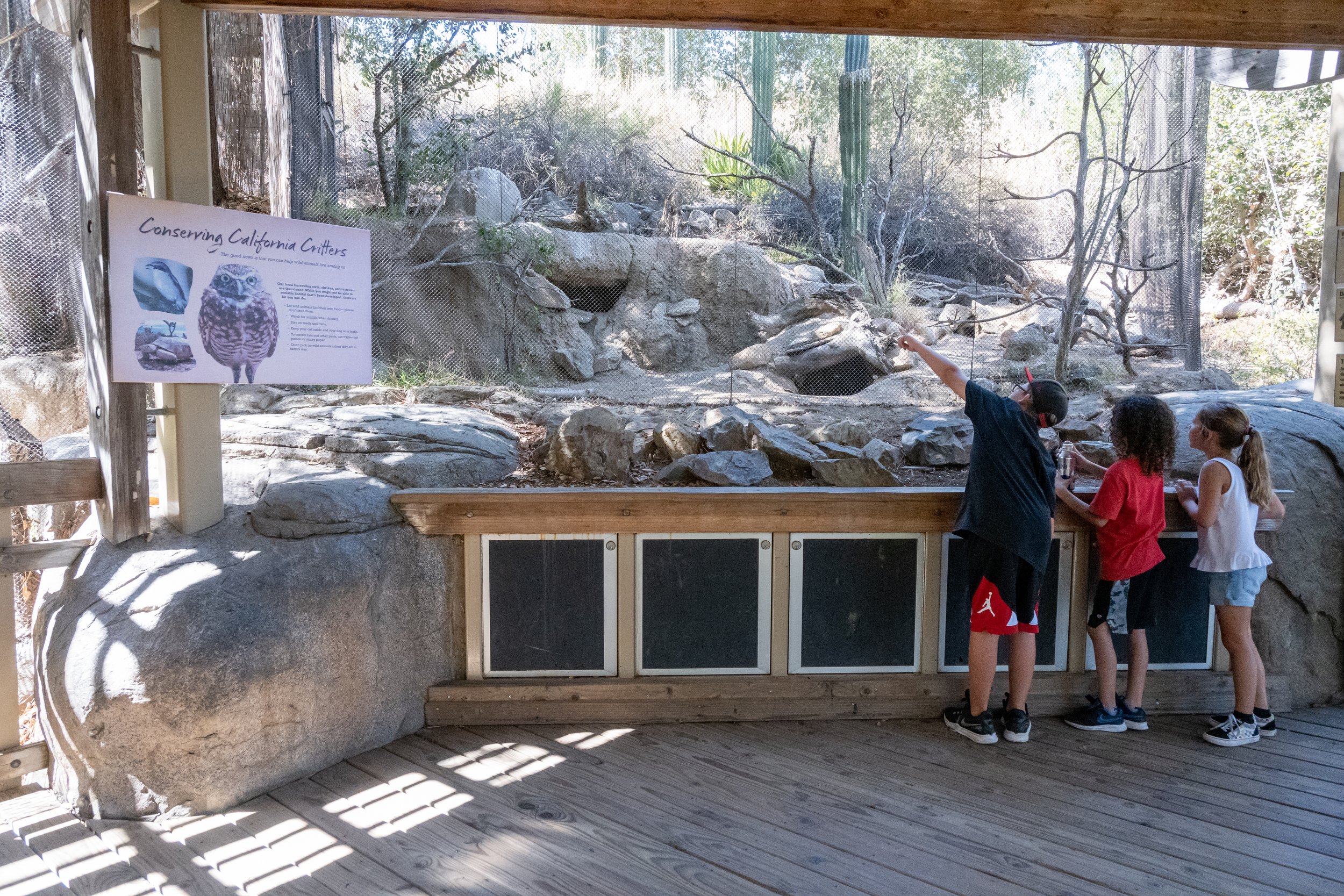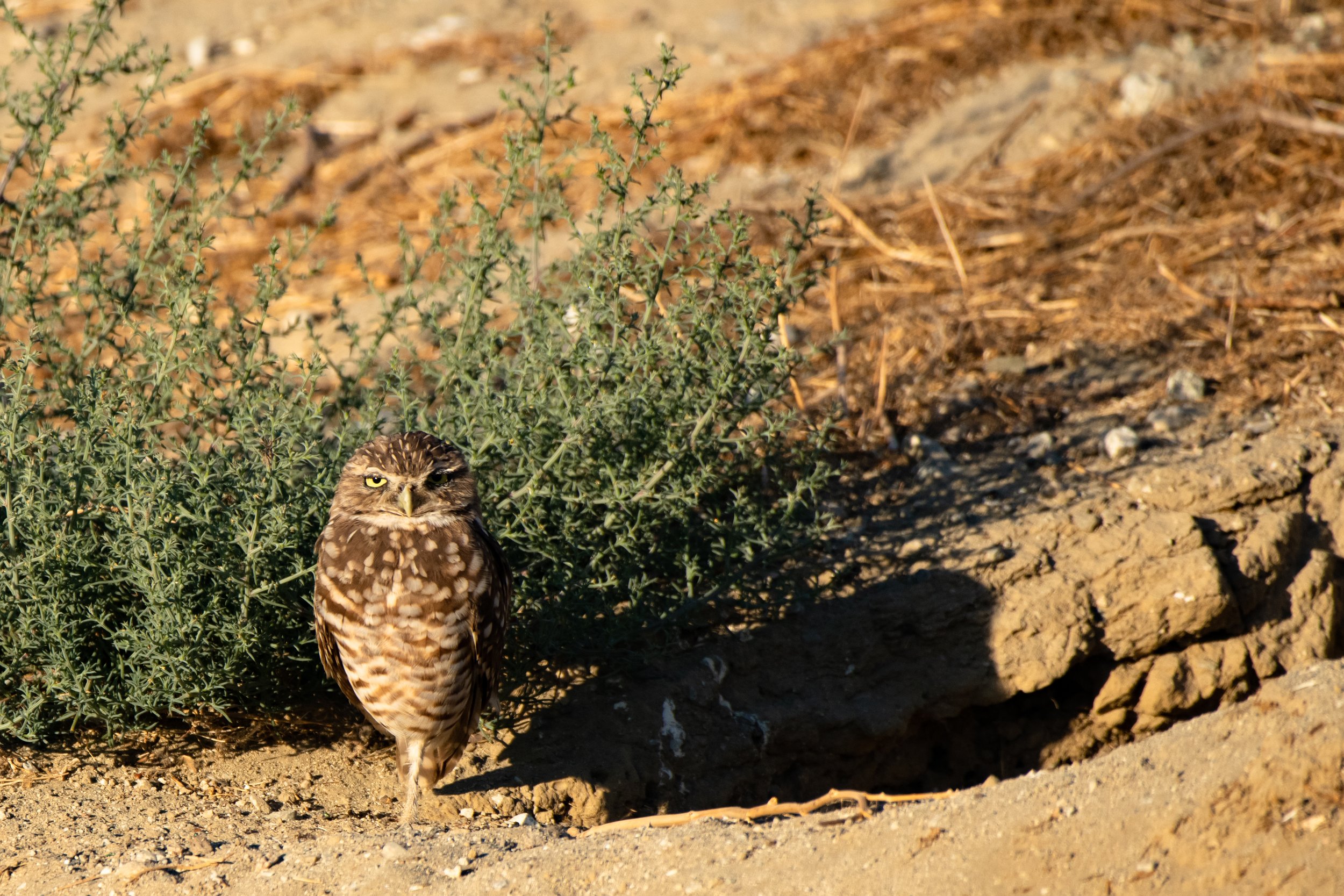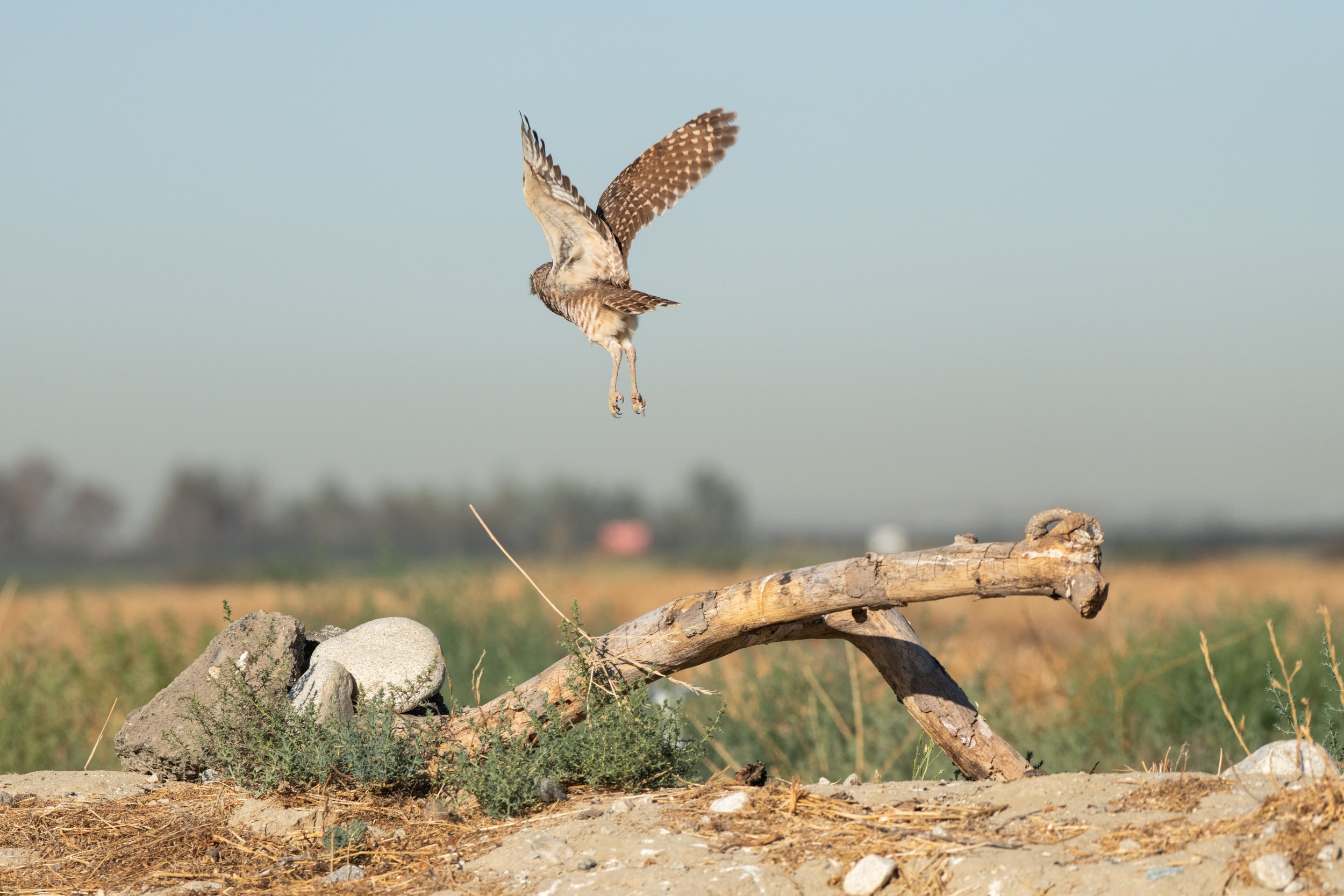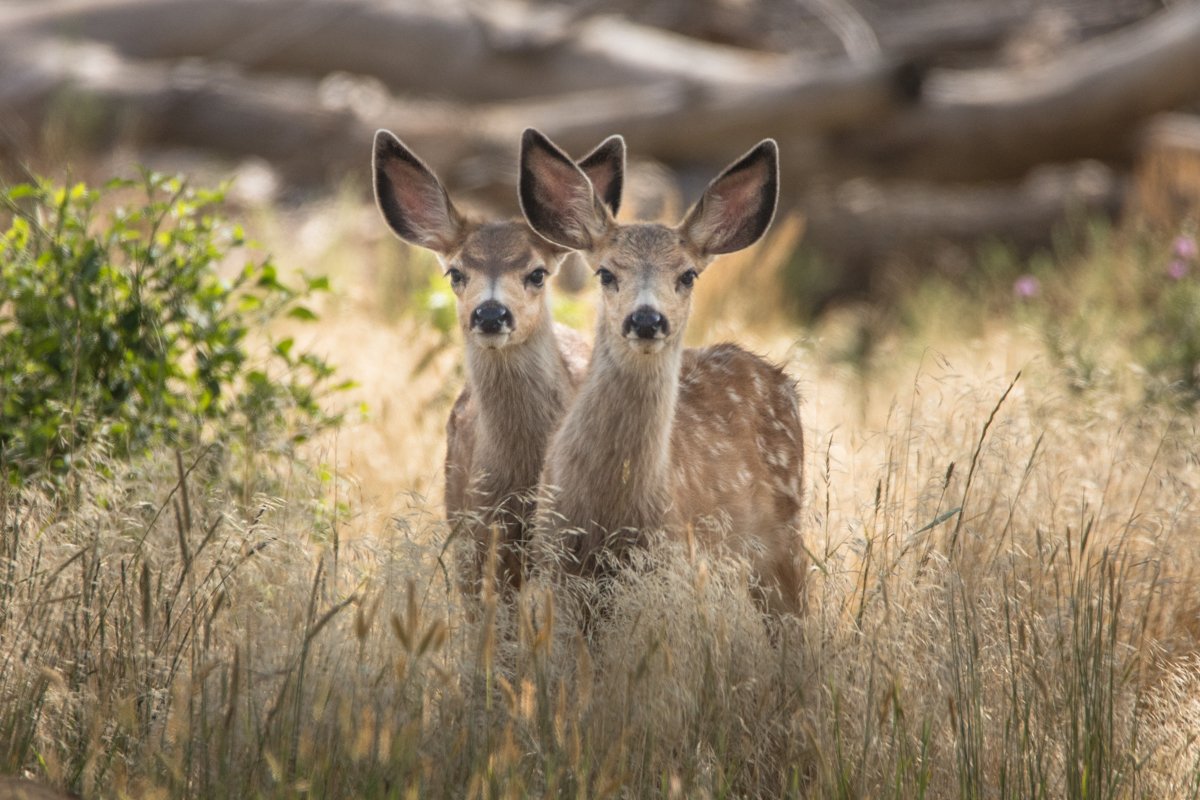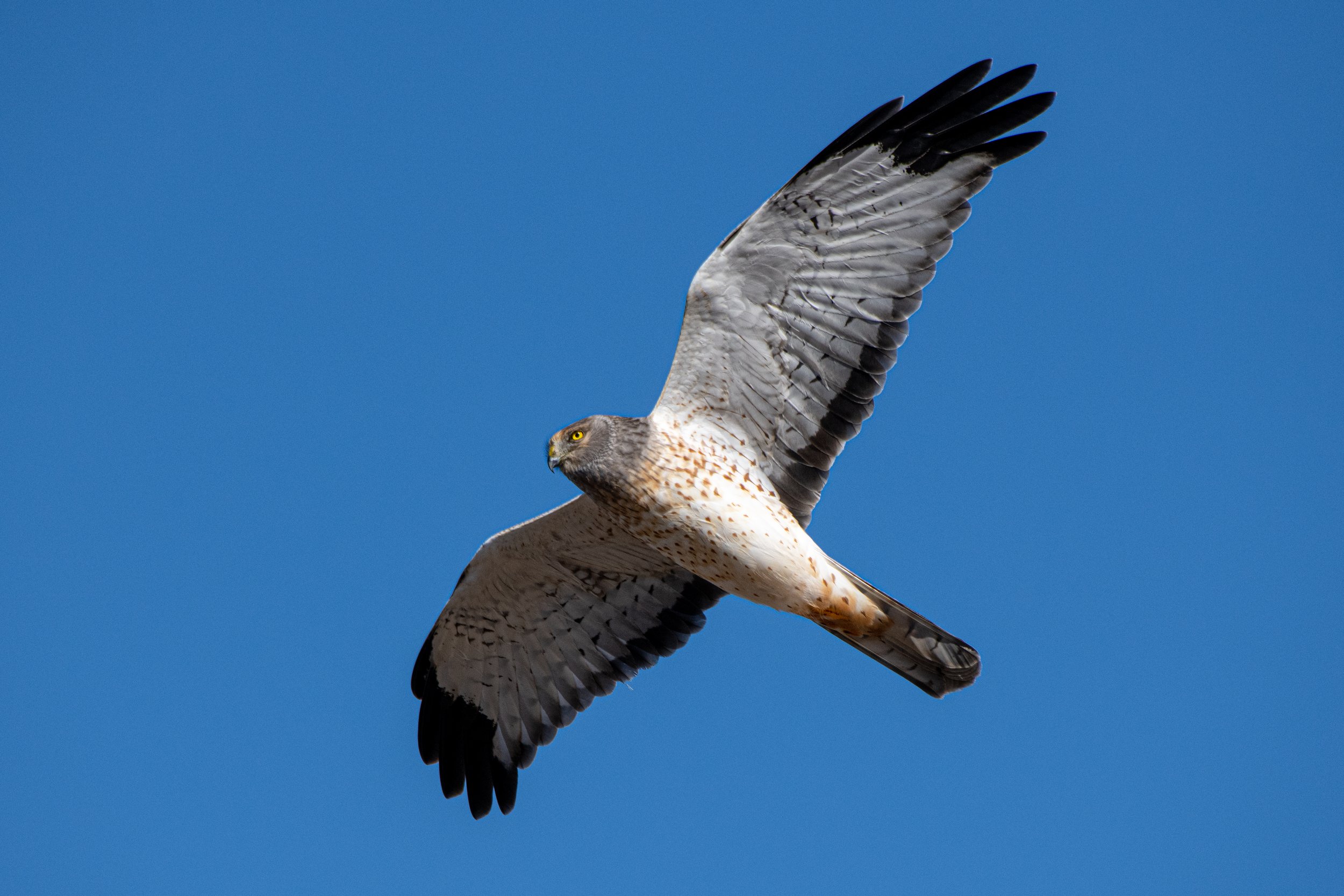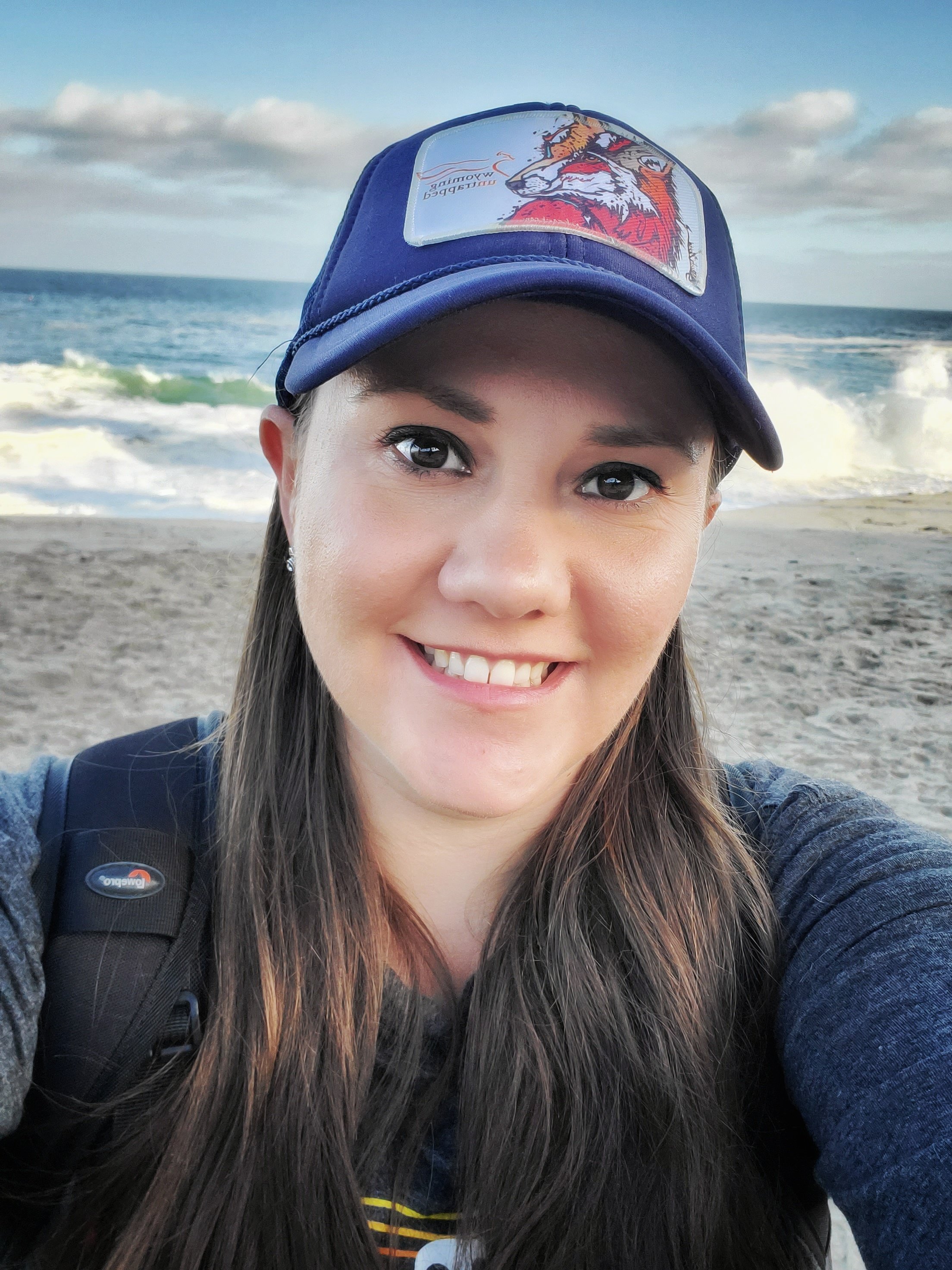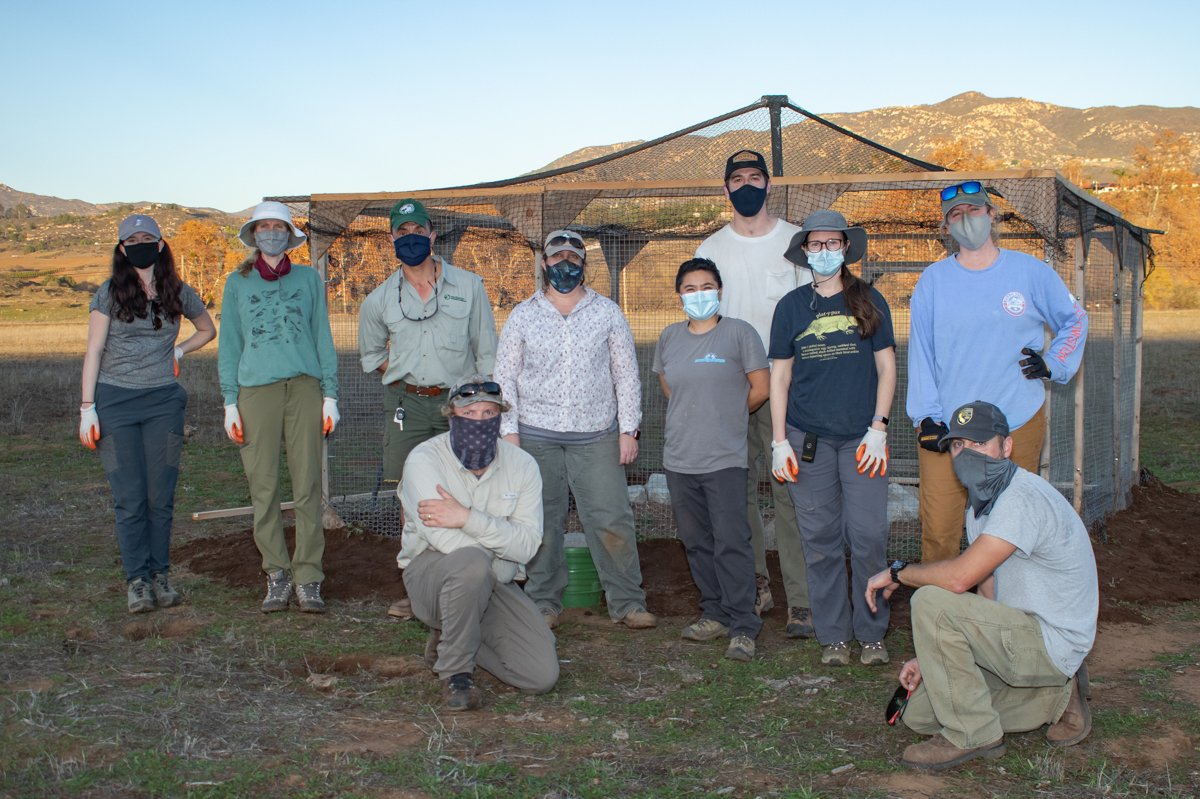Born to be Wild
How the San Diego Zoo, CDFW and others are building a nest egg for Southern California’s remaining Western burrowing owls
A translocated burrowing owl (Athene cunicularia hypugaea) sits outside an artificial burrow at Rancho Jamul Ecological Reserve.
Photos and Text by: Jennifer Leigh Warner
Collaboration may be the key ingredient to bringing back the threathened western burrowing owl (Athene cunicularia hypugaea) in San Diego County.
Burrowing owls, a grass-land species, were once quite prevalent in much of the western United States; however their population began to decline over the past few decades due to loss of habitat. The remaining habitat has also reduced in quality with the introduction to non-native grasses that are much taller and denser, which are not sustainable for many of the grass-land species such as ground squirrels and burrowing owls, without intense land management like mowing or grazing.
A wild western burrowing owl (Athene cunicularia hypugaea) stands atop of a log just outside its burrow in Southern California. Burrowing owls are listed as a Species of Special Concern in California.
Now listed as a California Species of Special Concern by the California Department of Fish and Wildlife much is needed to be done to ensure their survival. Weighing just 7 ounces and standing only 10 inches tall, these diminutive birds are one of the smallest owls in North America. Burrowing owls are the only owl to nest completely underground, utilizing burrows made from ground squirrels (Otospermophilus beecheyi). After the attempted eradication of these species, in San Diego County, burrowing owls are unable to find adequate homes to nest and raise their young.
A wild western burrowing owl (Athene cunicularia hypugaea) emerges from its burrow in Southern California.
History of the Burrowing Owl Recovery Program
By 2011 there was only one breeding population left in San Diego County, which resided just north of the Mexican border in the Otay Mesa region. That is when the San Diego Zoo Wildlife Alliance (SDZWA) in partnership with the California Department of Fish and Wildlife (CDFW) decided to create the Burrowing Owl Recovery Program to halt the decline of this charismatic species. The program is a multi-faceted effort to address all areas of burrowing owl conservation in Southern California. These efforts include everything from reengineering habitat to make it suitable for burrowing owl colonization to studies on passive vs active relocation to a conservation breeding program. They also use satellite GPS telemetry to track owls after translocation to determine currently unknown movement patterns and fates of relocated burrowing owls. The goal of the program is to bring better science and better conservation to burrowing owl populations in Southern California.
The burrowing owl (Athene cunicularia hypugaea) exhibit at the San Diego Zoo Safari Park in Escondido, California. The exhibit houses one of the breeding pairs that produce the burrowing owl chicks that will be translocated.
collaboration
For over a decade now, the CDFW at Rancho Jamul Ecological Reserve (RJER) have been working towards developing a sustainable habitat for burrowing owls and ground squirrels. This has included a grazing program that reduced dense thatches of old grasses and expanded areas of open ground. As habitat changed at Rancho Jamul Ecological Reserve, CDFW scientists observed more squirrel burrows, and the conditions seemed just about right for the owls.
The Burrowing Owl Recovery Team with San Diego Zoo Wildlife Alliance performs in the field medical workup for the translocated burrowing owls (Athene cunicularia hypugaea) at the temporary aviary at Rancho Jamul Ecological Reserve.
According to the Conservation Program Specialist for the Burrowing Owl Recovery Program for the San Diego Zoo Wildlife Alliance, Colleen Wisinski, M.S, “The California Department of Fish and Wildlife has been an invaluable partner and the program could not have been done without them. Their willingness to try our routes and to collaborate not just with on the ground efforts but also with their intellectual support has been what makes this program a success.”
Building the Aviaries Together
Marco Wendt with the San Diego Zoo Wildlife Alliance and Taryn Chiong with the Living Coast Discovery Center work together to secure the temporary aviary at Rancho Jamul Ecological Reserve from predators such as coyotes and weasels from digging under the fence. Inside the aviary the artificial burrow is blocked to avoid animals from entering the burrow.
Protecting the Aviaries
Kyle Rice an Environmental Scientist for CDFW at Rancho Jamul Ecological Reserve and Nicholas Aponte with CDFW work together to build fencing to protect the temporary burrowing owl aviary. With the grazing program at the reserve to create sustainable habitat, the aviaries need to be protected from the cattle.
What is happening now?
Now going into their twelfth year the Burrowing Owl Recovery Program has seen success in the relocated owls pairing up and hatching chicks of their own, with 24 owls being released in 2021 and another 26 set to be released in 2022.
The owls are born at the San Diego Zoo Safari Park near Escondido, California by one of the three breeding pairs on site. Once the chicks are old enough they are relocated to an off-sight aviary until they are ready for translocation. After the breeding pairs have had two broods of chicks, they too are released, often at the same time as their young. The scientists with the California Department of Fish and Wildlife determine which owls will he moved, based on genetic diversity. Once the owls are selected they are transferred to one of the designated relocation sites.
The burrowing owl (Athene cunicularia hypugaea) breeding pair that is on exhibit at the San Diego Zoo Safari Park in Escondido, California. The exhibit houses one of the breeding pairs that produce the burrowing owl chicks that will be translocated.
Prior to the selected owl’s arrival, a team comprised of CDFW and SDZWA work together to build artificial burrows for the owls to live in. The artificial burrows that are constructed at Rancho Jamul Ecological Reserve are used in place of naturally dug burrows. However, unlike natural burrow systems in active squirrel colonies, artificial burrows are not self-sustaining and require costly upkeep and maintenance. They measure temperature and humidity inside both natural and artificial burrows, and compared them relative to the birds’ reproductive success in each kind of burrow. Since the results showed that natural burrows are better for reproduction, they developed an updated design for artificial burrows that better mimics the temperature and humidity levels of natural burrows.
Colleen Wisinski, M.S. Conservation Program Specialist and Michael Stevens Senior Research Associate at the San Diego Zoo Wildlife Alliance transfer the translocated burrowing owls (Athene cunicularia hypugaea) into the temporary aviary at Rancho Jamul Ecological Reserve.
Once the burrows are ready the team constructs a temporary aviary for the new arrivals to adjust to their new environment. The temporary aviaries are supplied with plenty of food and water for them and the owls receive supplemental feedings throughout the coming months.
Soon after the aviaries are constructed the selected owls are moved to the site at Rancho Jamul Ecological Reserve. They are given a full check up, including being provided with new leg-bands, and blood work. They are also weighed and measured and their heart rate is recorded. This health check is to ensure that the owls are healthy and have the best chance of surviving in the wild. As soon as each owl is given the health check green light, they are moved into the aviaries to begin getting acclimated to their new habitat.
A translocated burrowing owl (Athene cunicularia hypugaea) waits in a kennel for her medical workup before being placed in the temporary aviary at Rancho Jamul Ecological Reserve.
In previous years some of the owls began laying eggs right in the artificial burrows before the team at CDFW and SDZWA took down the temporary aviary which then allows the owls to become completely free roaming.
Leg-banding
A translocated burrowing owl (Athene cunicularia hypugaea) gets her medical workup before being placed in the temporary aviary at Rancho Jamul Ecological Reserve.
Health Check
Michael Stevens Senior Research Associate at the San Diego Zoo Wildlife Alliance helps provide in the field medical workup for a translocated burrowing owl (Athene cunicularia hypugaea) before being placed in the temporary aviary at Rancho Jamul Ecological Reserve.
Hope for the future
It is important the people continue to support organizations that are restoring habitat for native species. Agencies like CDFW who owns and manages land for animals in San Diego County and places like the San Diego Zoo which provides conservation efforts to breed and raise the owls that will be released giving them the best chance to survive in the wild.
Colleen Wisinski, M.S. Conservation Program Specialist at the San Diego Zoo Wildlife Alliance transfers the translocated burrowing owls (Athene cunicularia hypugaea) into the temporary aviary at Rancho Jamul Ecological Reserve.
As the burrowing owl population in San Diego County continues to grow, now estimated between 100-200 breeding pairs your chance of catching a glimpse of these charismatic yellow-eyed cuties has greatly improved. And if you do look out onto the vast grassland habitat and see a small brown owl peeking out of their burrows you’ll see why it is no wonder that the American Bird Watching Association named the burrowing owl the 2022 Bird of the Year.
A translocated burrowing owl (Athene cunicularia hypugaea) sits inside an artificial burrow at Rancho Jamul Ecological Reserve.
Additional Images of the burrowing owl project
Click on the images to enlarge
Wild western burrowing owls
native habitat in southern california and grasslands species
the burrowing owls natural architect - the california ground squirrel
Natural predators of the western burrowing owl
Building the Temporary Avairy
East-coast subspecies of burrowing owl
Unlike the Western burrowing owl, the east-coast sub-species of burrowing owl (Athene cunicularia floridana), which resides in Florida, build their own burrows. In Florida there are an estimated 1000 nesting pair, with the largest population residing in Cape Coral. In the neighborhood surrounding the Cape Coral Library multiple burrows are located on the streets surrounding the library, all of them very active. The people in the community come together to donate parts of their land for the burrows.
Acknowledgement and Resources
Jennifer Leigh Warner
Burrowing Owl Recovery Program
San Diego Zoo Wildlife Alliance
Colleen Wisinski, M.S.
Conservation Program Specialist
California Department of Fish and Wildlife
David Mayer
Environmental Program Manager South Coast Region
California Department of Fish & Wildlife

















































